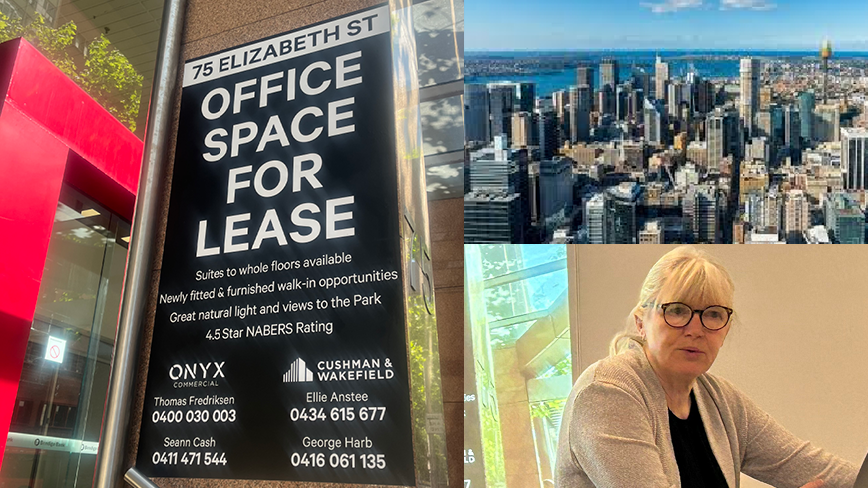Sara Wilkinson explores how to use ESG scorecard to lower the vacancy level in commercial buildings

In a recent research seminar, visiting professor Sara Wilkinson at KTH School of Architecture and the Built Environment presented a new way to think about how to tackle the situation of underused and vacant property space in Sydney and other cities of the world, a result of the new post COVID working patterns. The research project adopts an ESG framework as a way to attribute value to commercial buildings.
Globally, as we continue adapting to the ‘post-Covid’ lockdown world, towns and cities are experiencing different levels of activation. For many office workers, the hybrid working model is an attractive work-life balance option. In Australian capital cities, estimates range between just over 60% to around 80% occupancy of commercial offices based on post-Covid data. The 2023 Australian job market is much in favour of employees, as retirements and a lack of immigrants from 2020 to 2022 impact on the availability of labour. To date, this lack of suitably qualified and experienced labour has made employers reluctant to insist on the return to the office five days a week.
The underuse of offices, plus the increase in online shopping, means there is less demand for in-person retail services and less footfall in city cafes, with the result that vacancy in this sector of the property market has increased. Some rents have decreased as revenues for high-footfall retailers have been impacted. The underuse and vacancy in ground-floor retail is very visible on the street, further reinforcing the notion that the city has lost vibrancy. While under-utilisation of office space is less visible, it is very evident to property owners and to authorities deriving revenue from public transport. While local and city authorities endeavour to establish events and initiatives to reinvigorate their communities, planned events are infrequent, and it is evident that ongoing solutions are needed.
It is against this backdrop that Sara Wilkinson and her colleagues, Dr Gill Armstrong and Prof Jua Cilliers, and Mark Willers (Charter Keck Cramer), are engaged in the Sustainable Temporary Adaptive Reuse (STAR) toolkit project and the development of an ESG scorecard for stakeholders to facilitate temporary use.
The main question is: What can we do with underused and vacant space?
A series of workshops with participants with lengthy experience in the real estate industry and from academia delved into different asset management strategies. In the Asset renewal category, they found the “Meanwhile use.” The consensus reached by the participants was that one year to less than one year is “temporary” and fits the “meanwhile use .” Typical lease terms in the 1980s could be up to 25 years long. Now they are typically 2-3 years long in Sydney,” says Sara Wilkinson.
The workshops also applied a social lens and discussed the concept of social value. They reached a consensus that STAR can demonstrate ESG principles. They produced an ESG scorecard of commercial buildings based on 15 attributes, such as “Contribution to the community,” “Diversity and equity,” and “Supporting neighbouring businesses .” Adopting this ESG framework is a way to attribute value to the buildings.
However, regulation and valuation are not currently on board with STAR principles and the concept of social value. Also, many stakeholders are unable to implement social causes in their buildings due to legislative or insurance complications. The third workshop dug deeper into these questions, and in the next step, the researchers will test the ESG scorecard.
“The aim is to use exemplars from the premium and lower quality office stock to test the ESG Scorecard to see how potential, different new user types score, and whether the case they can make is convincing to owners,” says Sara Wilkinson.
Read more about the research project .
The seminar was hosted by Sustainable Finance Lab , a transdisciplinary research center established to transform financial markets and to enhance the sustainable development of society.

